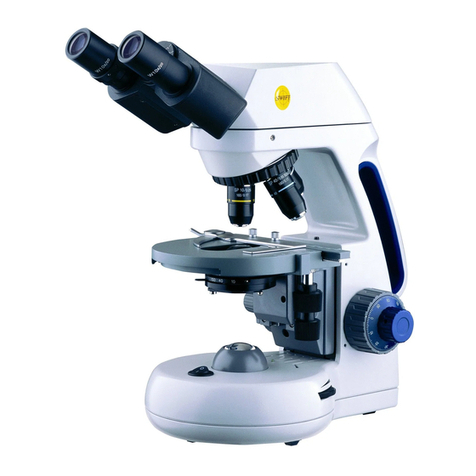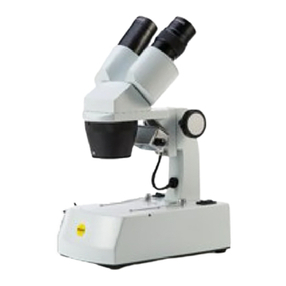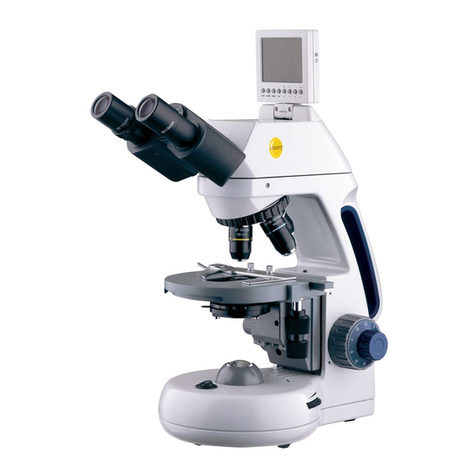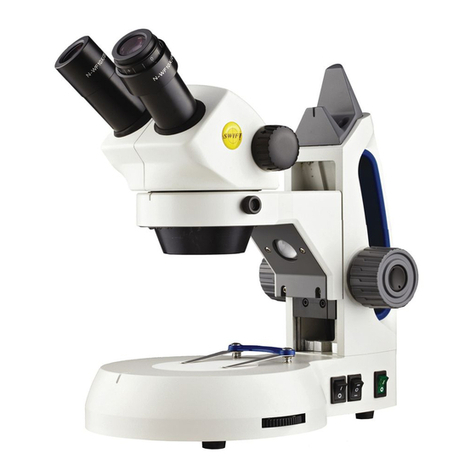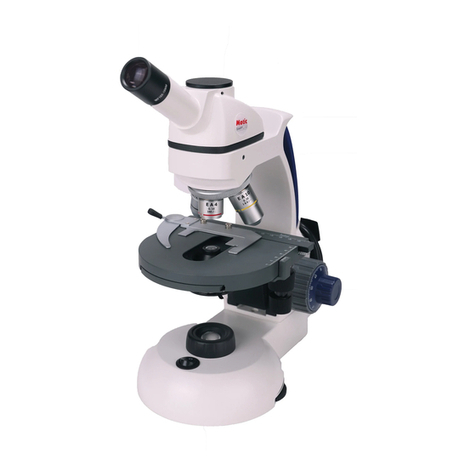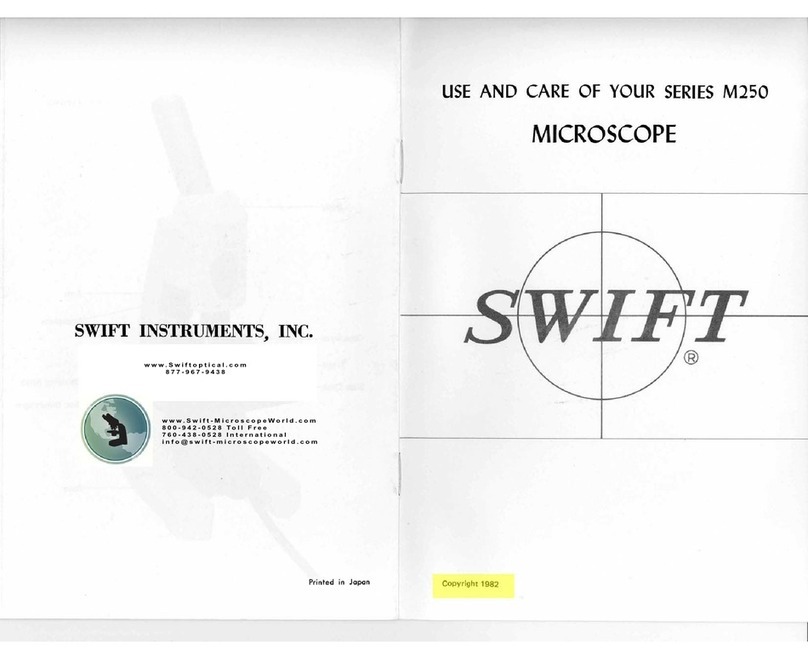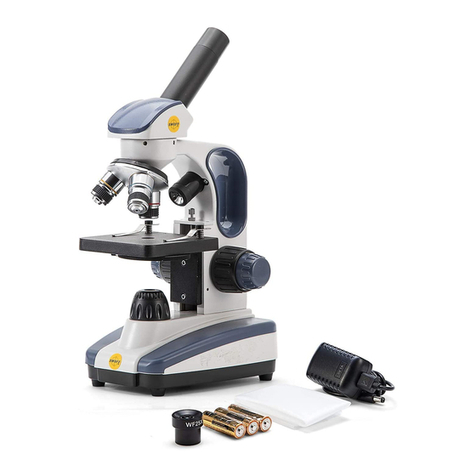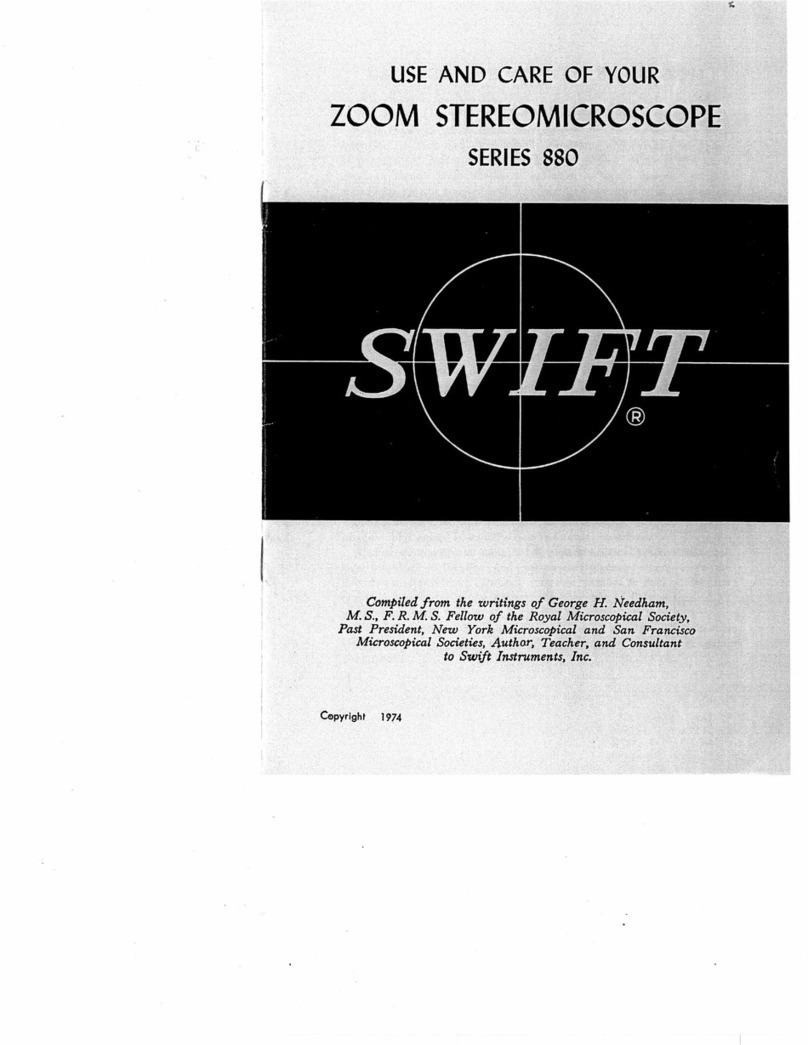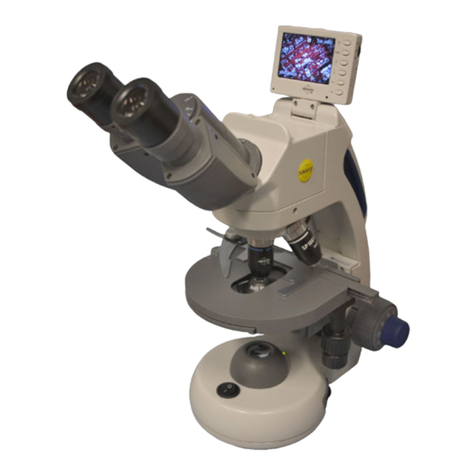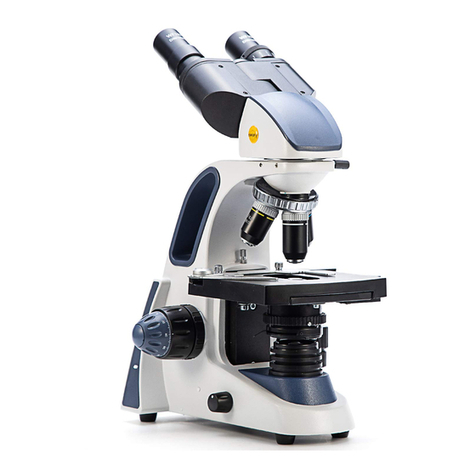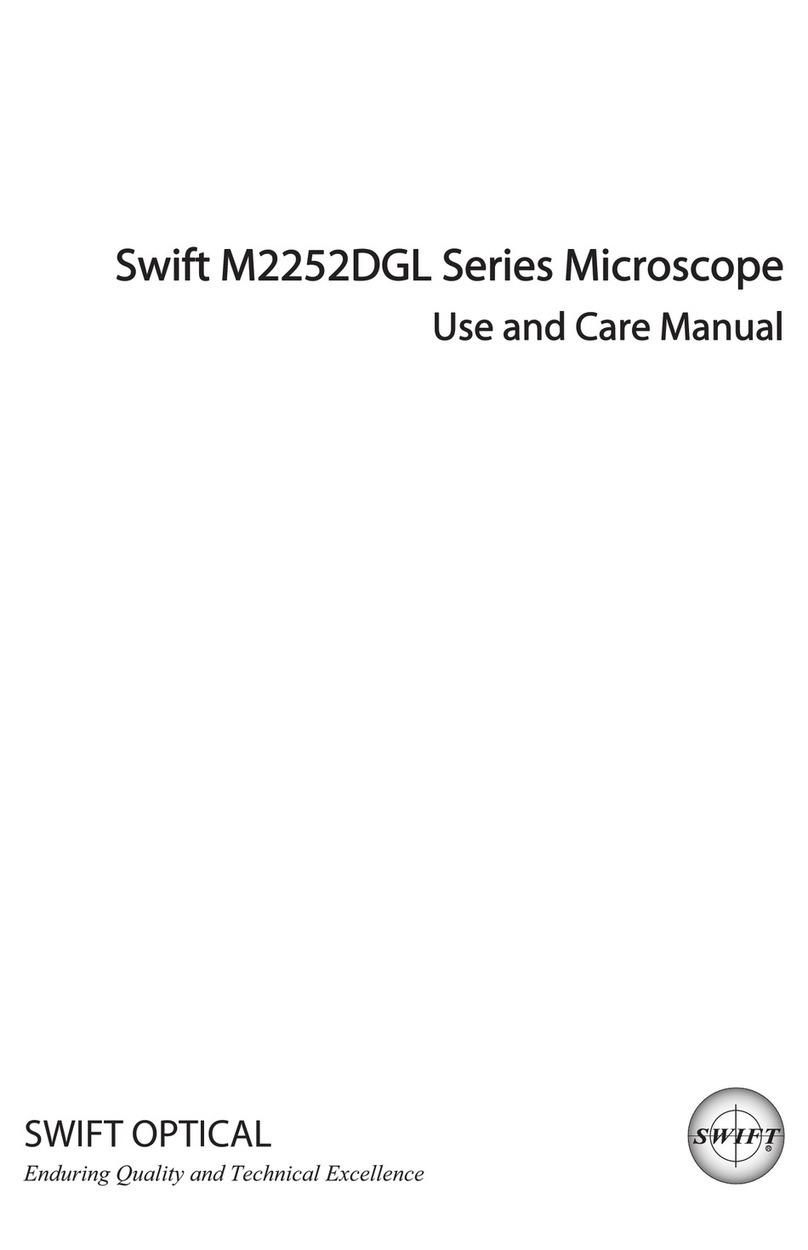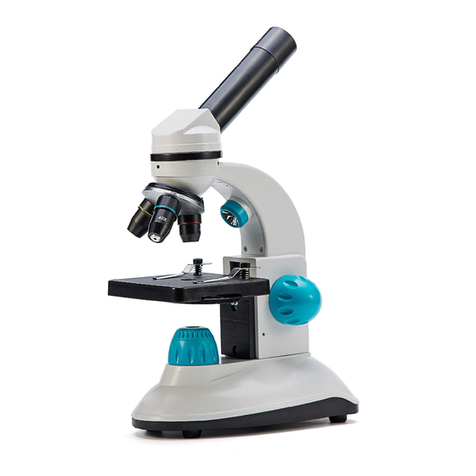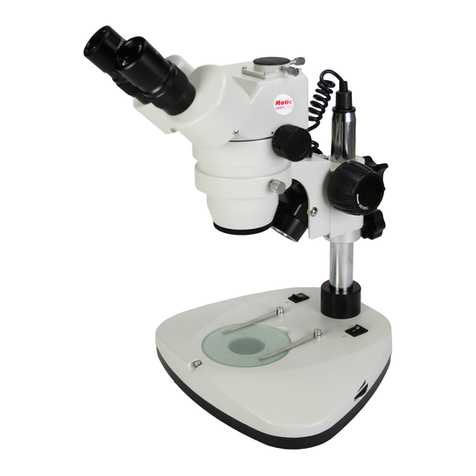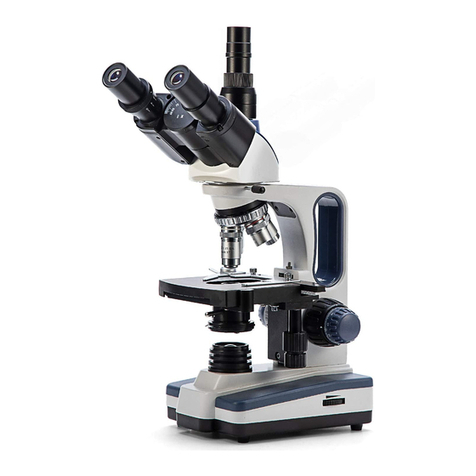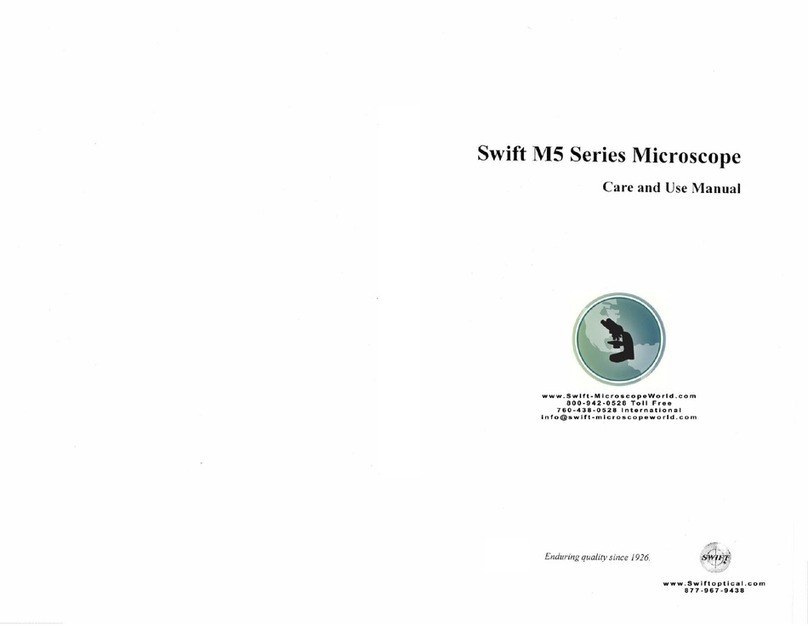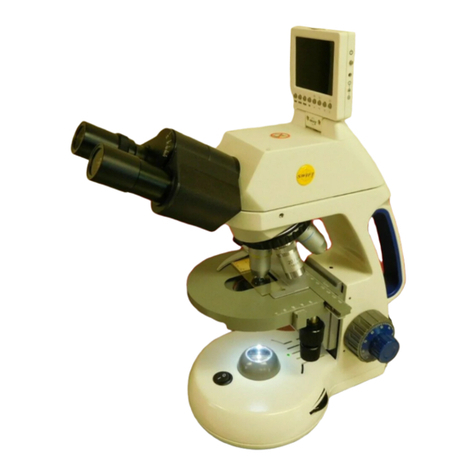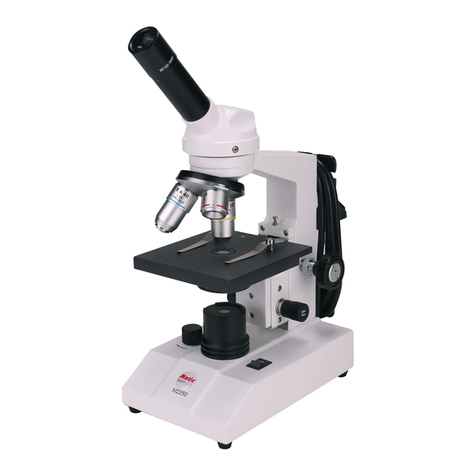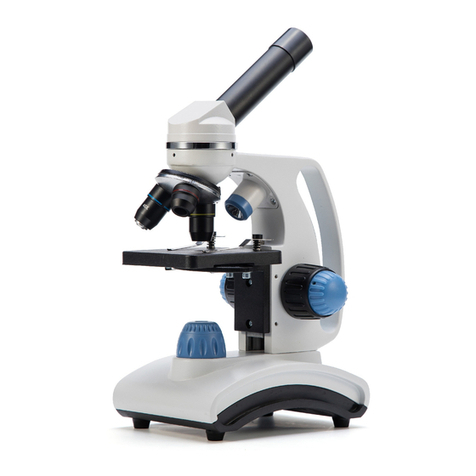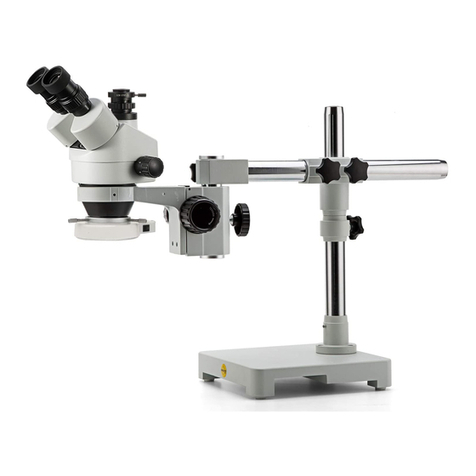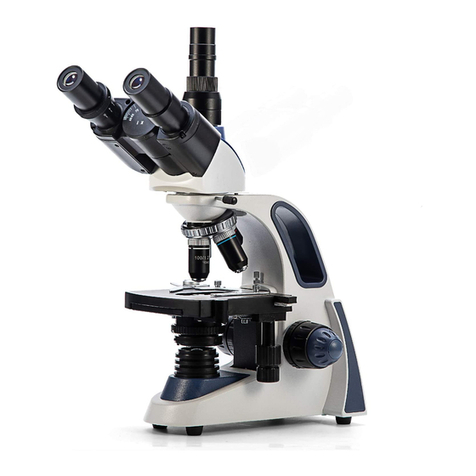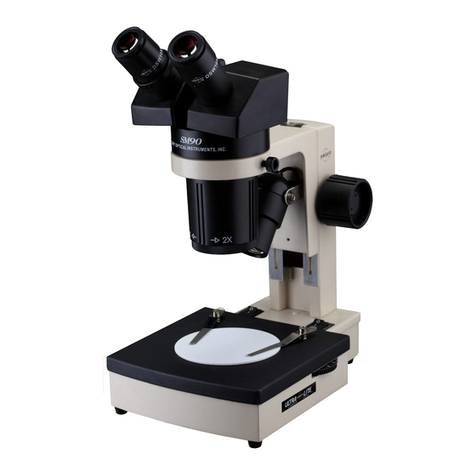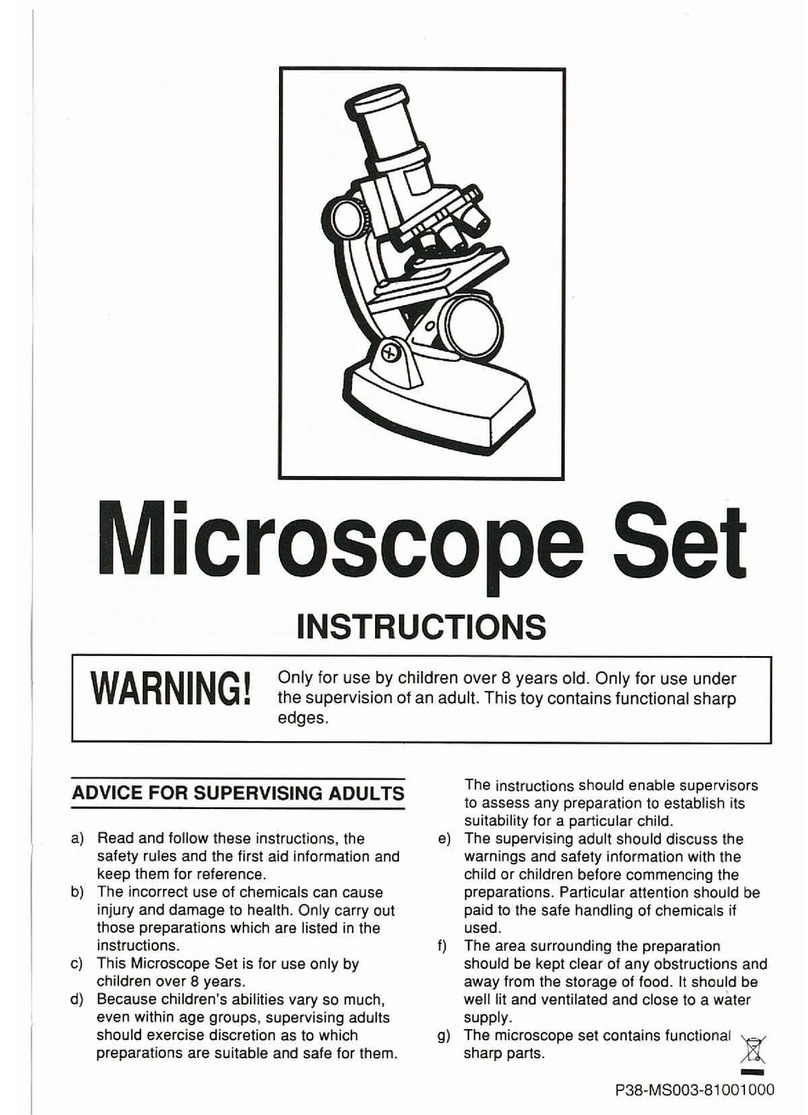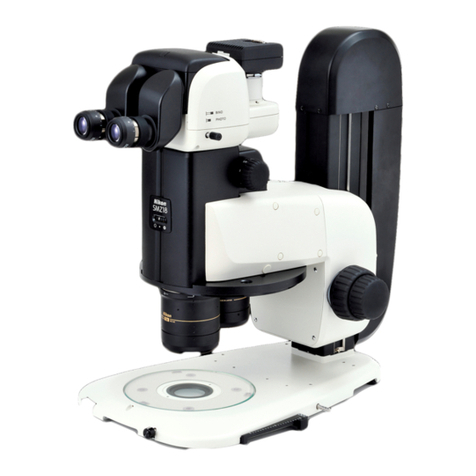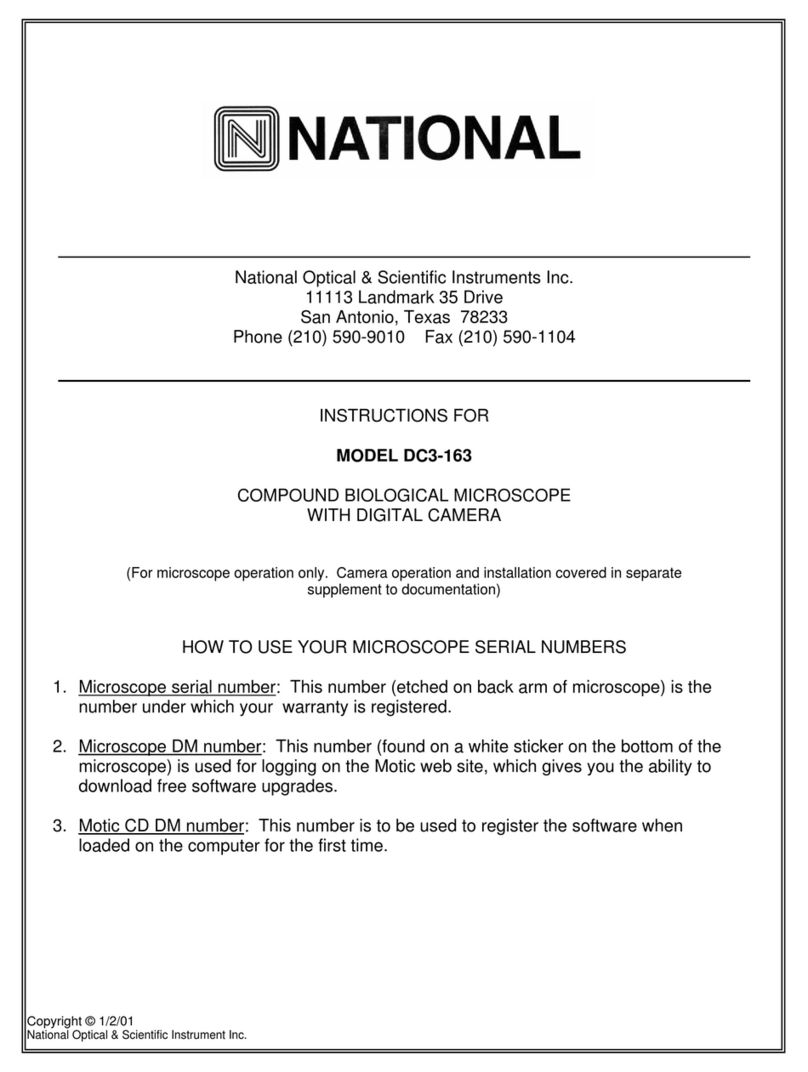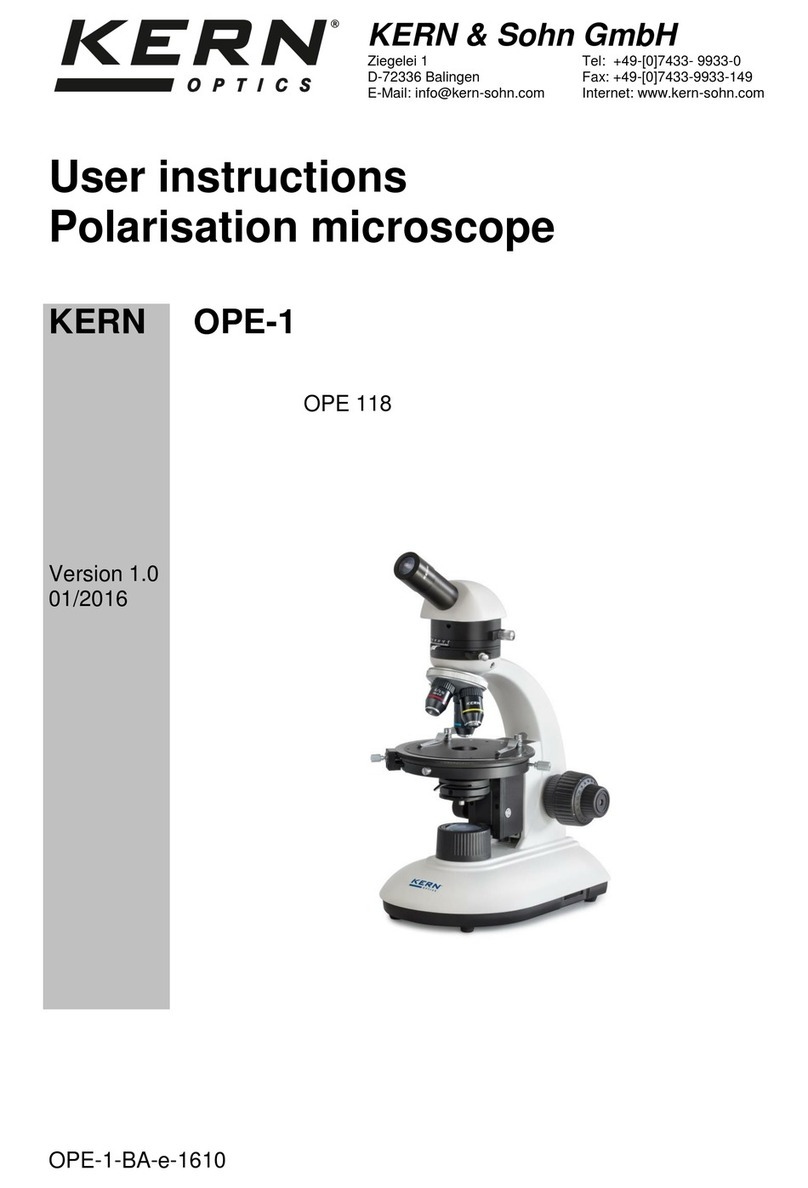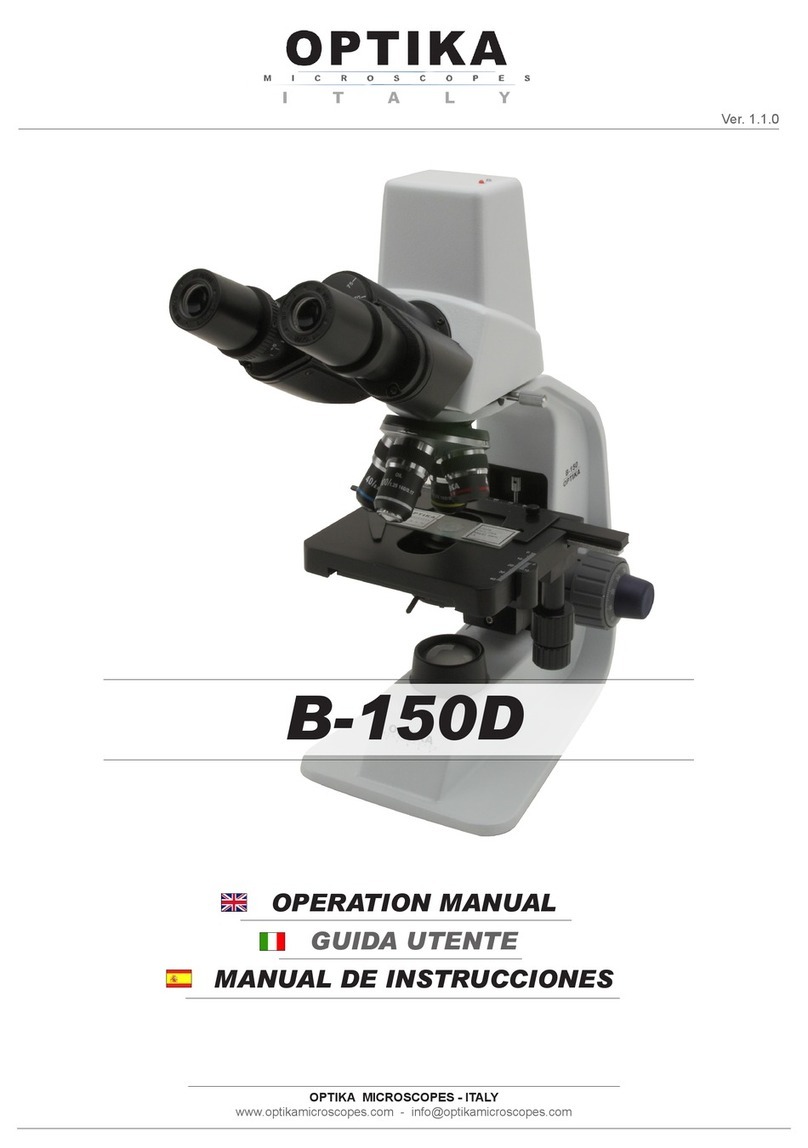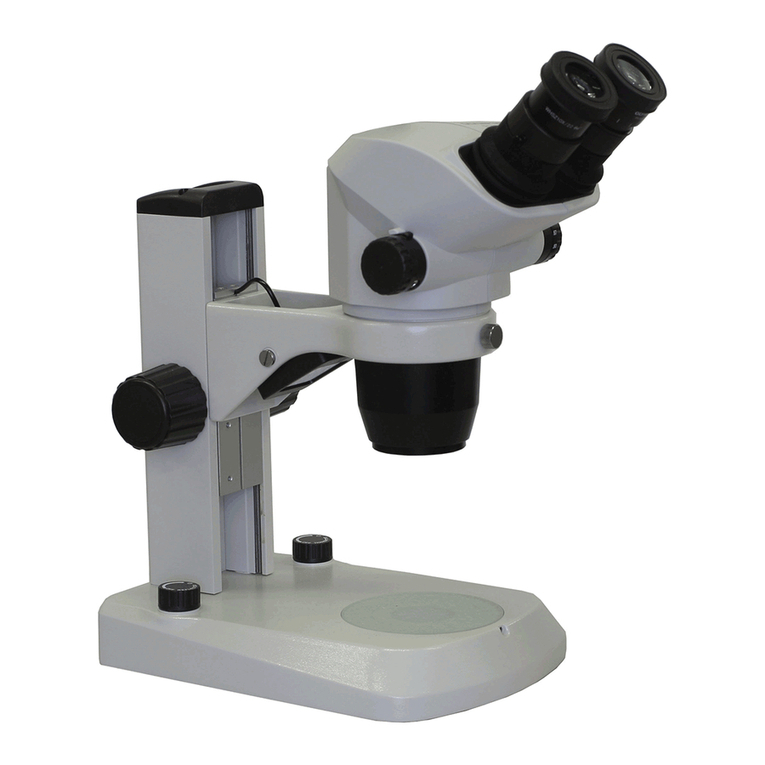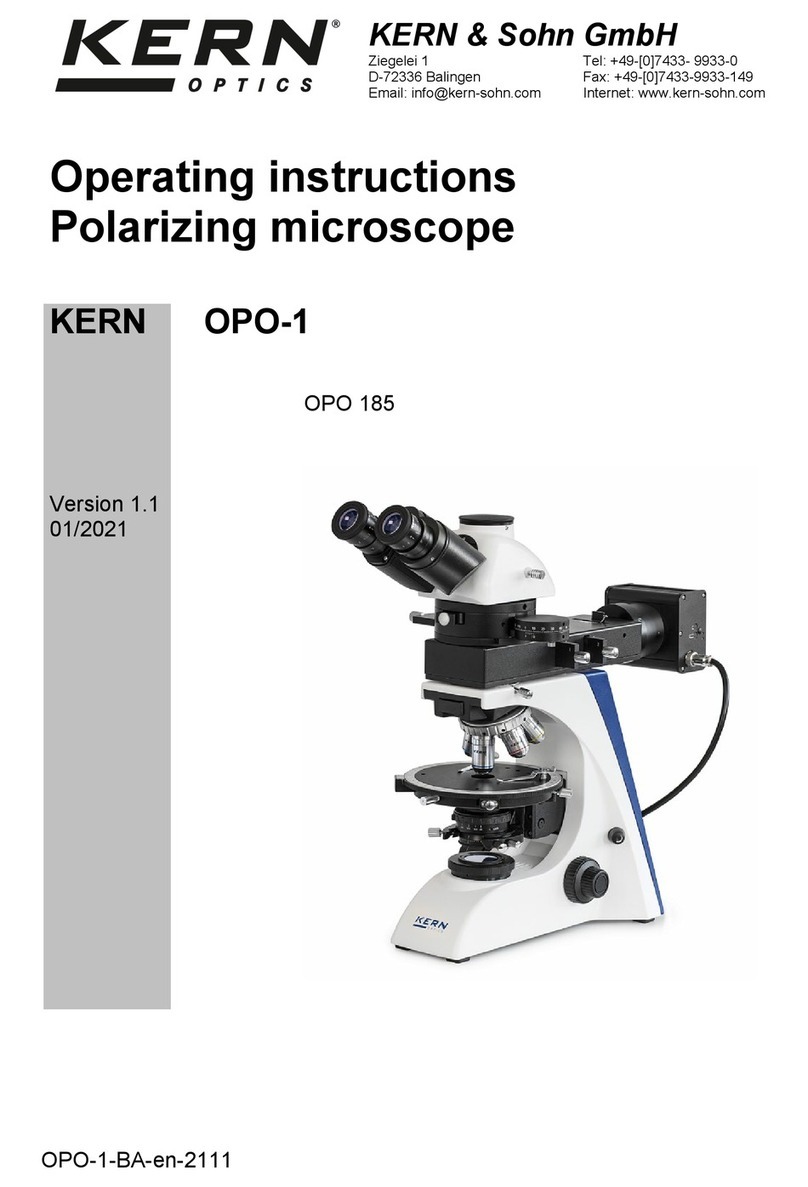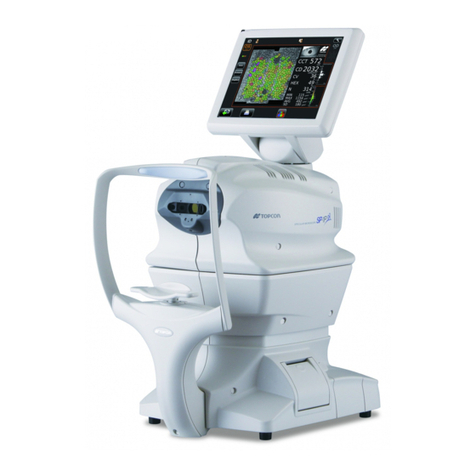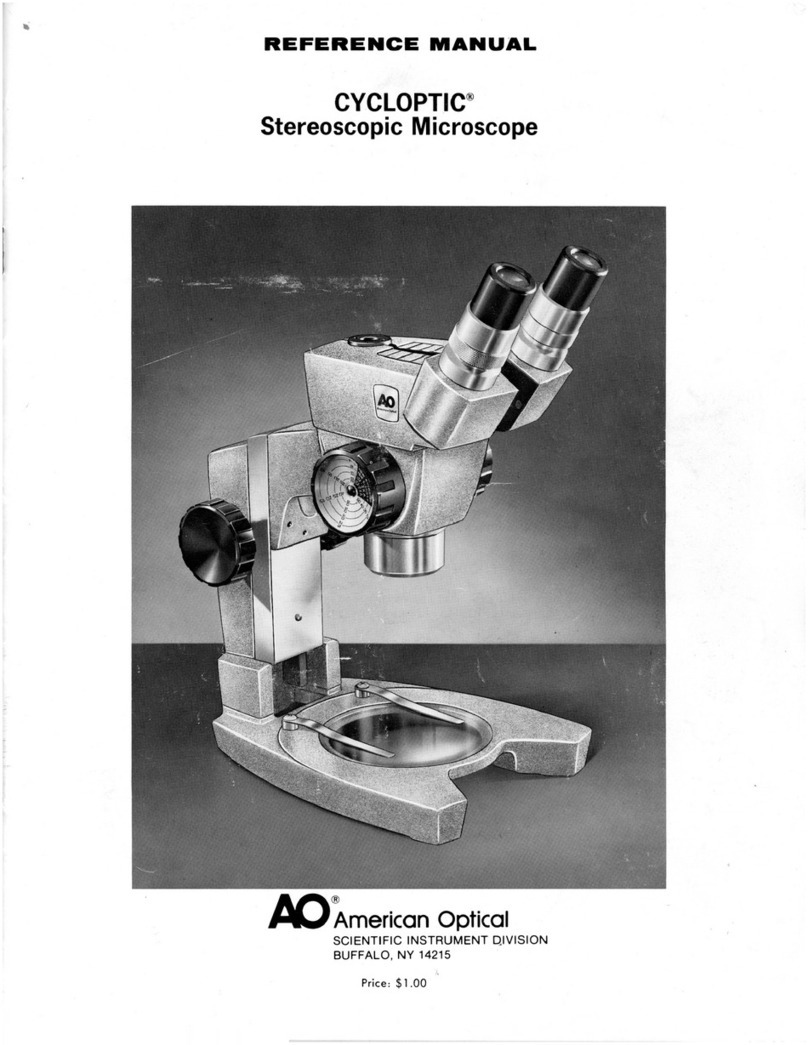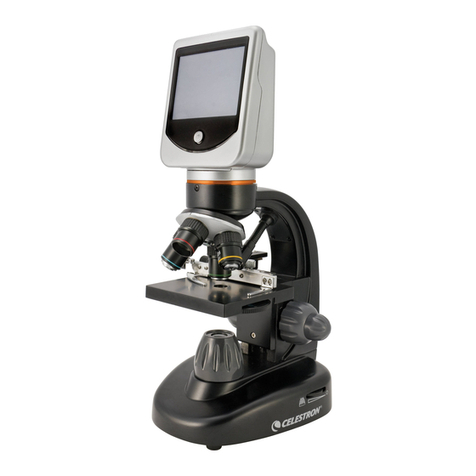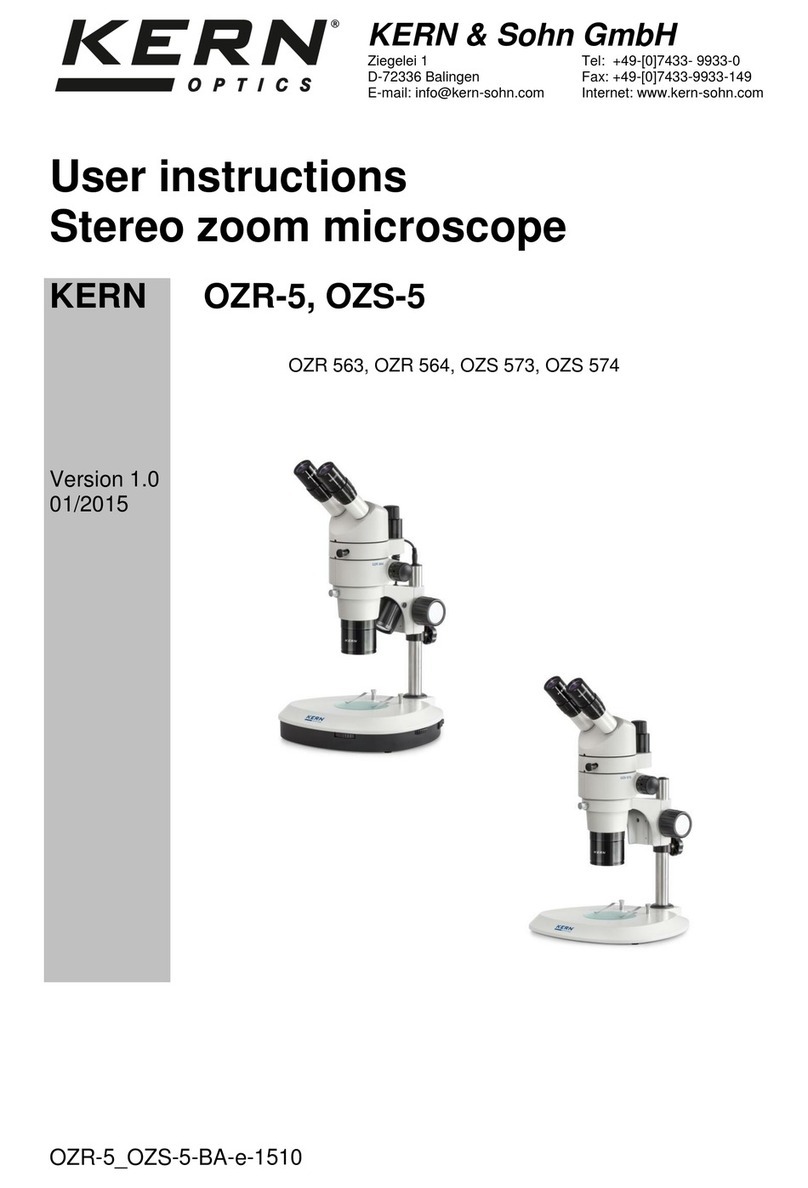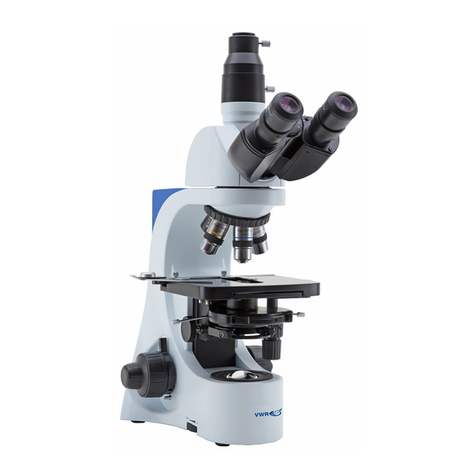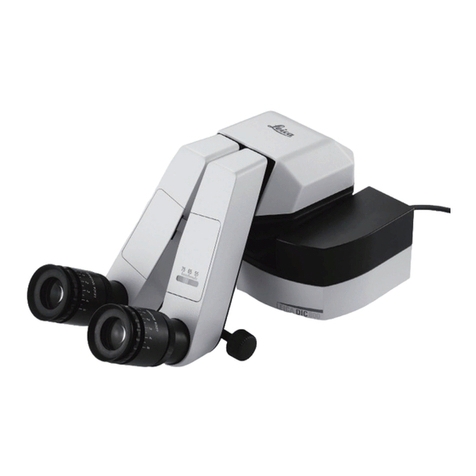
3. While viewing through the eyepiece, rotate the coarse focusing knob
tobring the specimen intoview.Next, sharpen the focus using the
fine focus knob.
4. Ifthe image of the specimen appears pale, the aperture of the
diaphragm should be decreased (ifthe model has a disc diaphragm,
rotate the disctoasmaller hole, conversely, ifthe model hastheiris
diaphragm, it should be closed slightly). This will increase contrast
in the specimen’s image. Ifthe specimen appears dark, slightly
open the diaphragm.
5. Rotate the nosepiece tothe next higher power objective. A slight
turn ofthefine focusing knobmay berequired tobring the imageof
thespecimeninto sharp focus. Oncethespecimenisinfocuswiththe
highest power objective, it will be in focus with each lower power
objective.
OIL IMMERSION (Only for modelswith a 100X objective)
When lightrays from the objective lens to thespecimenpass throughair,
they are distorted slightly, a phenomenon known as refraction. This is
usually not a problem at amagnificationof 400X orlower.However,at a
magnification of 1,000X and above, refraction becomes problematic.
This problemis reducedsignificantly by placinga thin layer of very clear,
viscousoil betweenthe slide and tip oftheobjective lens. The result is a
much clearer image at 1,000X because the oil has the same light
transmitting properties as glass. Using oil slightly increases the
resolutionand brightness ofthe image. Usually avery thin slide (size#1)
is used for oil immersion because at this magnification, the working
distance is very small and is critical tofocusing the specimen. Good
quality glass (not plastic) cover slips should be used. Iftheir thickness is
over 0.17mm, the objective will not resolve properly, because the
specimen cannot be moved close enough tothe objective lens tobe in
focus.
Place atinyamountofoil (only1drop should besufficient)ontotheslide
prior torotating the 100XRD objective intoposition. It is essential to
thoroughly clean the objective tip after use to prevent damage and to
ensure that an image can be seen clearly the next time the objectiveis
used. Please contactSwiftOptical or your authorized Swiftdealer forthe
appropriate immersion oil touse.
